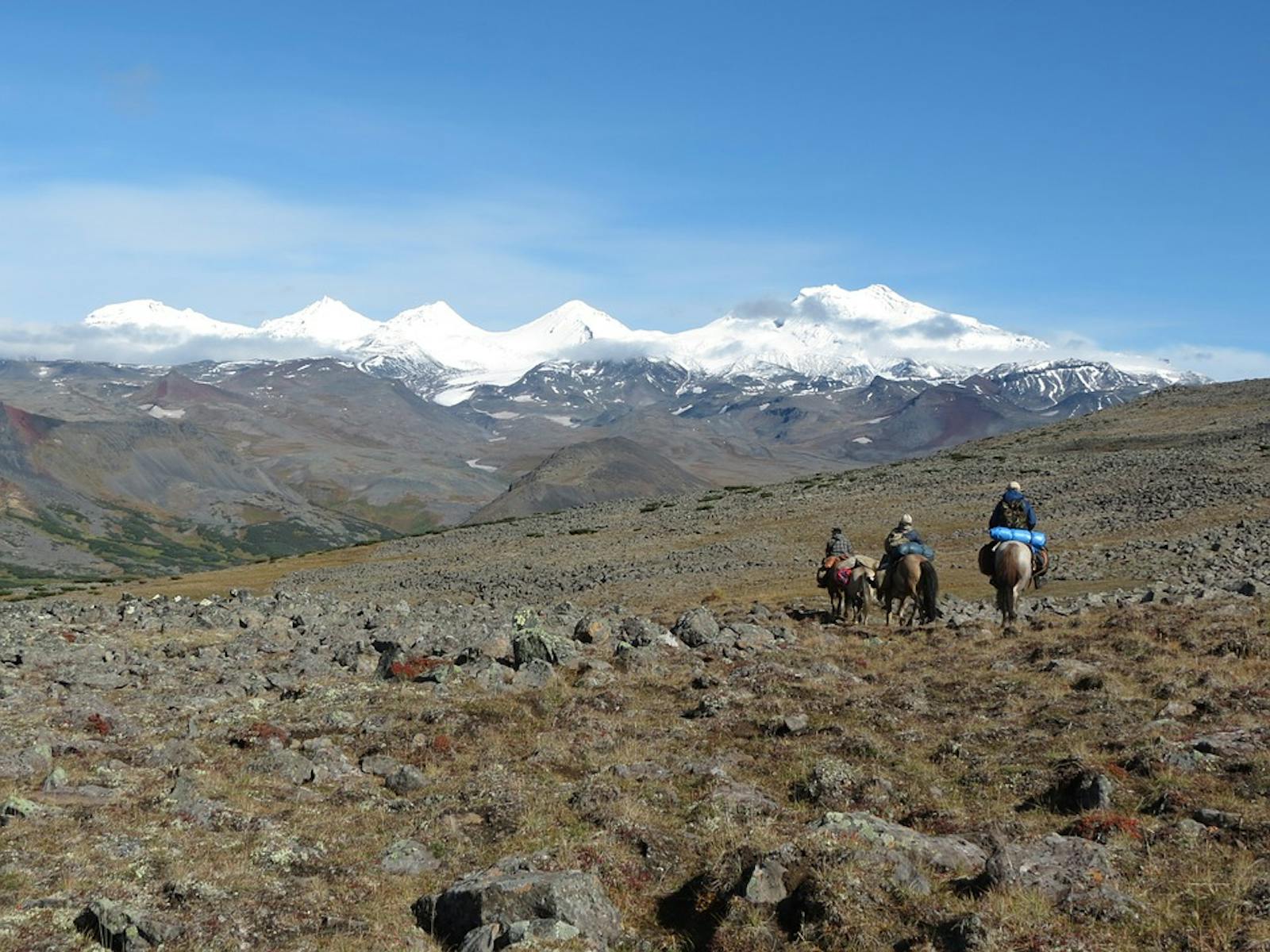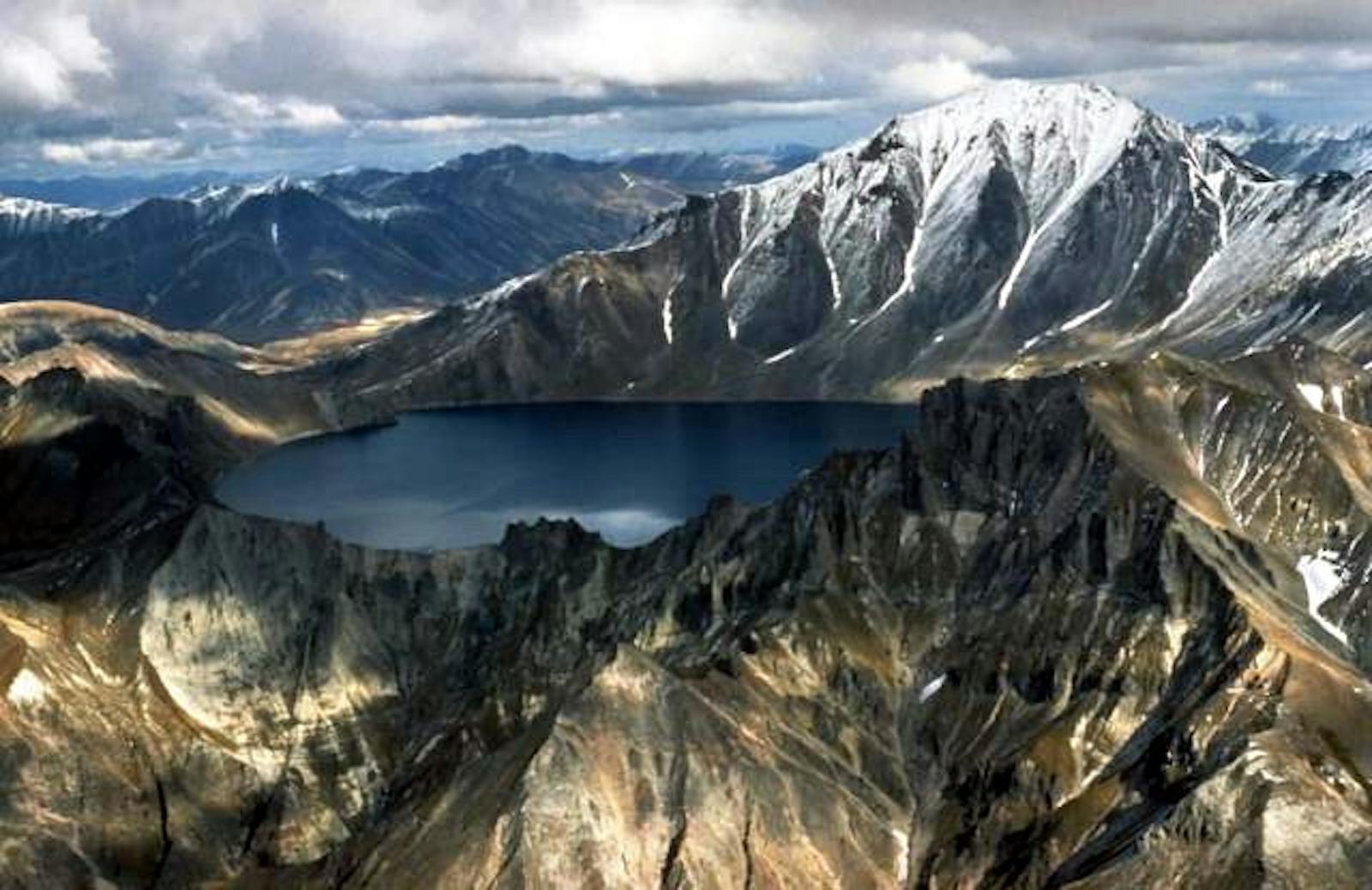Kamchatka Tundra
The ecoregion’s land area is provided in units of 1,000 hectares. The protection goal is the Global Safety Net (GSN1) area for the given ecoregion. The protection level indicates the percentage of the GSN goal that is currently protected on a scale of 0-10. N/A means data is not available at this time.
Bioregion: Sea of Okhotsk Coastal Taiga, Meadows & Tundra (PA6)
Realm: Subarctic Eurasia
Ecoregion Size (1000 ha):
11,957
Ecoregion ID:
773
Protection Goal:
89%
Protection Level:
2
States: Russia
The location of huge active volcanoes and pristine rivers that teem with salmon during the spawning season, the beauty of the Kamchatka Tundra ecoregion is rarely surpassed. Flowers bloom briefly after deep snow patches melt, impressive Stellar’s sea eagles congregate in winter, and enormous brown bears range the tundra, feeding on berries before their annual salmon feast begins.
The Pacific Plate is actively subducting beneath the Kamchatka Peninsula at about 80–100 mm per year, resulting in significant volcanic activity. This ecoregion covers the two resulting mountain ranges — the Sredinny mountains running down the center of the peninsula, and the more dissected Vostochniy range on the eastern side, with over 20 active volcanoes. Coastal areas in the north of the peninsula, part of the eastern side, and the southern tip are also included.

The flagship species of the Kamchatka Tundra ecoregion is the tundra wolf. Image credit: Creative Commons
The highest Sredinny peak is Ichinskaya Sopka (3,621 m) with other peaks at mostly 1,800–2,500 m. Vostochniy peaks mainly reach 1,500–2,000 m, while the highest is an enormous volcano, Klyuchevskaya Sopka (4,750 m). Northern Pacific cyclones result in an average of 900–1,400 mm precipitation spread evenly throughout the year. Snowfall is heavy and can drift to 15 m deep in some places. The average annual temperature is about -0.8°C and average monthly temperatures are -16.1–14.6°C, although this can be considerably colder at higher altitude.
The southernmost examples of Arctic tundra are here, found in a zone above 1,200 m. Above this, only fragments of lichen are found, while below 1,200 m are dwarf Siberian pine thickets and forests of crooked-trunked Erman's birch. Dwarf alder thickets grow in saturated soils or paths of snow avalanches. The tundra zone is a mixture of plant communities, for example of dwarf willow tundra (netleaf willow, arctic willow), wind-exposed alpine meadow, with species such as Oxitropis pumila and Carex kamtschatica, and dwarf shrub tundra (bog bilberry, dwarf birch, black crowberry, lichens such as Cladina, Cladonia, and Cetraria species). Where deep snow patches thaw late, flowers such as blue mountain heath, Aleutian mountain heath, and wedgeleaf primrose bloom. Barren slopes on the sides of volcanoes have Kamtchatka cinquefoil, weaselsnout, Arctic bluegrass and Poa lanata.
There are many small mammals. Shrubby riverbanks are home to endemic Kamchatka shrews. Arctic lemming live in the dwarf willow tundra. Mountain hare turn snowy white in wintertime and form a major part of the Eurasian lynx’s prey. A large subspecies of grey wolf—Tundra wolf (Canis lupus albus)—inhabits the ecoregion, often preying on reindeer. Snow sheep live in the high altitudes of the Vostochniy Mountains.
The Kuril Lake in the south of the ecoregion is the winter home of a unique accumulation of birds of prey, with 500–700 Stellar’s sea eagles, 100–150 white-tailed sea eagles, and up to 50 golden eagles. The lake is also the largest spawning ground in the world for sockeye salmon. Very large brown bears rely on salmon spawning areas within the ecoregion to gain enough weight to survive the winter.
Large tracts of tundra remain undisturbed. Several protected areas have land within the ecoregion, for example Bystrinsky Nature Park and South Kamchatka Nature Park (Yuzhno-Kamchatsky), both of which are part of the Volcanoes of Kamchatka World Heritage Site, and Ozero Palanskoe in the north of the ecoregion. Various exotic species have been deliberately introduced, usually in an attempt to farm fur, including muskrat, American mink, and Canadian beaver.
Damage by off-road vehicles is increasing, poaching within protected areas occurs, and a hydroelectric dam is planned for Kronotskoye Lake. Wolves are hunted because of conflict with reindeer herders. Unsustainable, often illegal amounts of sockeye salmon bound for the Ozernaya River and Kuril Lake are fished each year.
The priority conservation actions for the next decade will be to: 1) prevent damage to habitats and ecosystem processes due to infrastructure development (hydroelectric dam, roads, tourism); 2) control poaching and illegal fishing; and 3) prevent pollution and habitat loss due to mining and fossil fuel extraction.
Citations
- Chernyagina, O. ed. 2015. Plants and animals of Nature Park «Bystrinsky» (Central Kamchatka). In Russian. Petropavlovsk-Kamchatsky: Vitus Bering Kamchatka State University.
- Nakamura, Y. and Krestov. P.V. 2007. Biogeographical Diversity of Alpine Tundra Vegetation in the Oceanic Regions of Northeast Asia. Berichten der Reinhold-Tüxen-Gesellschaft. 19, pp.117-129.
- Krestov, P.V., Omelko, A.M. and Nakamura, Y. 2008. Vegetation and natural habitats of Kamchatka. Berichten der Reinhold-Tüxen-Gesellschaft. 20, pp.195-218.


.png?auto=compress%2Cformat&w=300)
